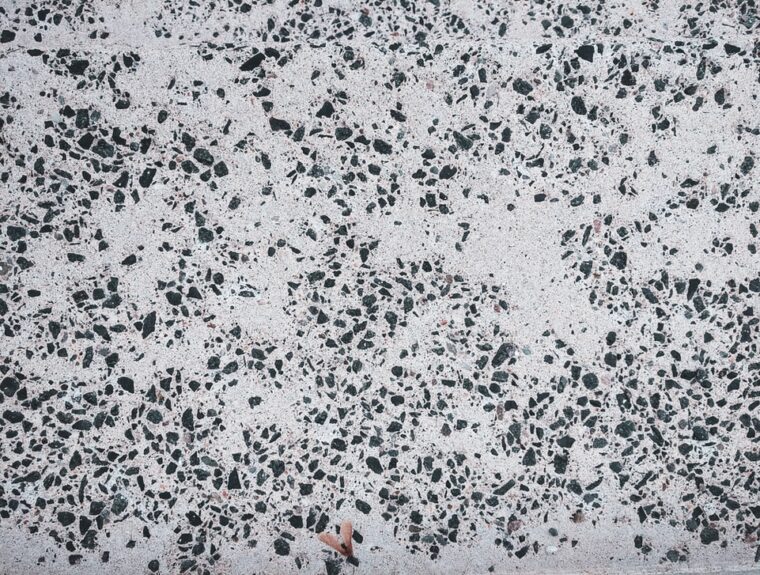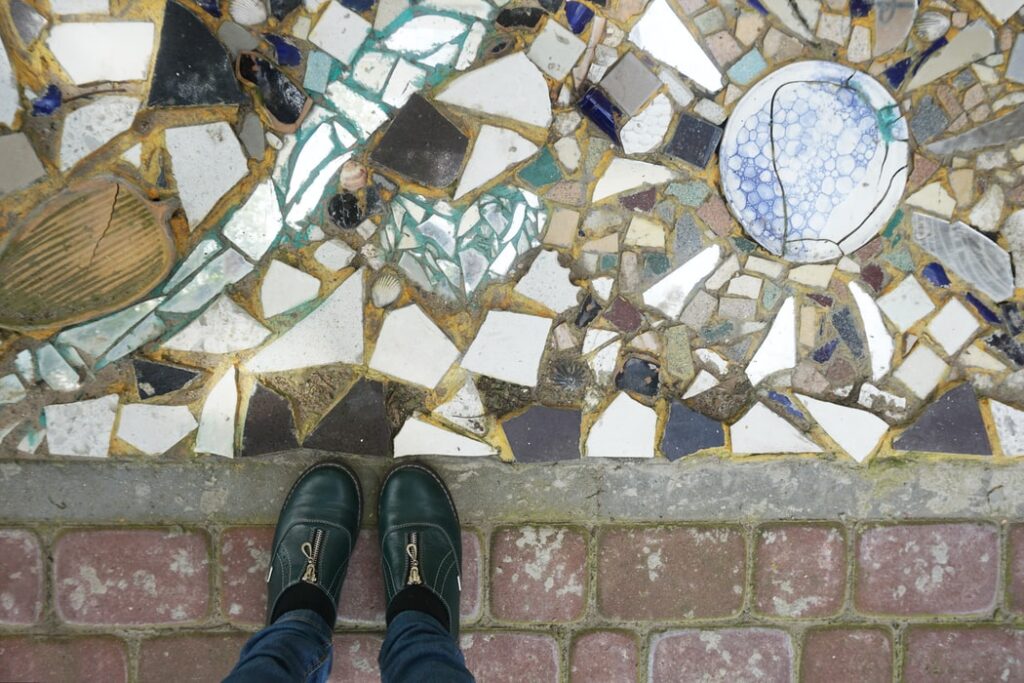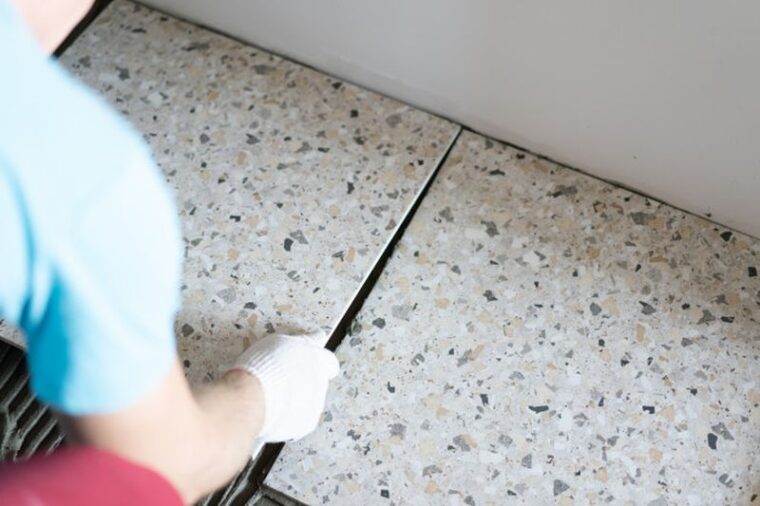Terrazzo is a form of flooring that has been in use for centuries and has always been composed of marble chips and various aggregates that are bound together by cement or any other epoxy binder. Cement was always used in traditional terrazzo, but epoxy has now made its way into the field since the 1970s and is largely favored for indoor applications.
Some Thoughts on Terrazzo
Traditional terrazzo is laid over a base concrete floor to give a thickness of finishing material that is 1/2 to 3/4 inch thick. This is then allowed to set and cure, after which it is ground and polished to give it its final lustrous appearance. The grinding and polishing is carried out in different stages from the coarse to the fine, and after every stage you have to wait for the curing and setting. This makes the laying of traditional terrazzo a fairly time-consuming job.
Epoxy terrazzo is laid with a lesser thickness, but cures and hardens in 24 hours, after which the finishing work of grinding and polishing can be undertaken. This greatly reduces the time for the floor to be ready for use. Epoxy, however, is vulnerable to ultra violet rays, and hence cannot be used in open spaces outdoors. Traditional terrazzo has no such restriction. Terrazzo is very durable, and examples of this can be seen in its use in many places and monuments that are centuries old. Know more about Terrazzo floors, contact this Terrazzo Flooring company milestoneflooring.co.uk.

Reasons for Divider Strips
Like all materials, terrazzo and its ingredients are affected by temperature differences and this constant expansion and contraction can lead to surface cracks in the flooring. That is the reason panels of terrazzo need to be of a size that controls this cracking. The size of these panels can vary, and will need smaller panels in hot weather countries, while larger panels can be used in the colder ones. Ideally, these panel sizes rarely exceed 1500mm by 1500mm, though 1200mm by 1200mm is more the norm. You can also vary these panel sizes to make them rectangular, as long as the longer side is not more than twice the shorter one. Panels control movement of the terrazzo and hence restrict its cracking. Divider strips are used to demarcate the boundaries of panels and can be of many materials.
The terrazzo can be of many colors and combinations of its ingredients. This allows architects and designers to give full scope for their talent to make attractive and permanent patterns, logos, or other customized designs. This is greatly assisted by the use of divider strips laid in a way that indicate the design or change of color or pattern. So, the material that is used for divider strips has to be flexible and ductile and capable of making the most complicated of patterns. During the grinding and polishing, these strips also get ground and must be a factor when you choose the material for divider strips.
Materials for Divider Strips
What are the materials used for divider strips? Most floors nowadays make use of aluminum. It is a material that is affordable, easy to bend to the shapes required, and is recyclable. Zinc, which looks similar to aluminum, but is avoided, when cost is the factor. Brass is another much favored material for divider strips and can impart greater aesthetics to designs. Copper has also been used for dividing panels and patterns in terrazzo flooring.
The problem with these two materials is that they can be affected by epoxy, and are costlier than aluminum, the present most used material. Plastic strips are also used as its possible to add various colors to the plastic to further enhance designs. Use has also been made of glass, that makes the strips practically invisible, though this is restricted to forming straight lines. Clear plastic will also have the same effect.

Thicknesses of Dividers and their Installation
This is more a preference than any design or structural requirement. Thicknesses used are 1/16″, 1/8″ or 1/4″. The smaller thicknesses are more suitable for intricate patterns, as this makes them easier to bend to conform to the design that is being laid. The higher thicknesses will support greater depths of terrazzo, though the minimal thicknesses in epoxy terrazzo do not require this to be considered. The thickness to be use is more dictated by the patterns being laid down, and the separation between panels that the designer finds necessary.
It is customary to lay down the dividers on the base concrete floor to the required design and have it approved by the architect or designer before any terrazzo is laid between them. The dividers have to be of a width that is equal to the thickness of the terrazzo that is being laid. They are then laid down and secured in cement mortar or by other means, so that they remain firm when the terrazzo mixture is being poured into the mold so created by the base concrete and the strips that act as sides to the mold. Where all panels are in straight lines, use is often made of aluminum angles of the required depth, with one side of the angle more easy to nail down to the floor.
Other Considerations
Where you have a vast expanse of concrete floors in a building with a number of stories, it is customary, that these floors will have expansion joints that are clearly marked by the presence of definite structures that are meant to separate slabs so that they can deal with the expansion. This separation can be quite substantial and is clearly visible. It is important that any pattern or design in the terrazzo take these expansion joints into account. Strips must be laid to conform with the alignment of the expansion joint in the base concrete, and if necessary, similarly separated and filled with the appropriate fillers.

Strips also help to differentiate different types of floors, like when you move from a terrazzo floor to one that is tiled in wood, ceramic, or stone, or even are moving to a carpet. Care must be taken to see that these strips are firm enough to protect the separation.
